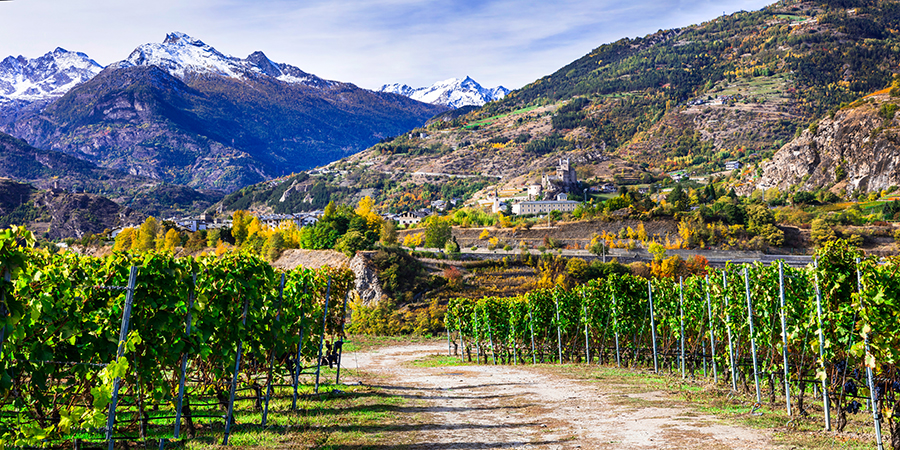Wine has been at the heart of Italian culture for millennia, and has today worked its way into the hearts of wine lovers worldwide. Rooted in such history, we naturally label the established grape varieties collectively as Italian. In this article, we’ll explore the historic roots of some of the Northern Italian varieties, propagated and influenced by the hands of men far and wide.
The Key Role of the Greeks
The first wave of influence came from the Etruscans, who were among the first people to develop a wine culture and commerce in the Italian peninsula before the 8th century BC. Two centuries later, the Greeks colonized the south of the peninsula and planted many Greek vines in the vast, well-suited landscape. The knowledge and techniques introduced by the Greeks continued into the days of the Roman Empire. And as the Romans carried out their conquest across the vast swathes of Europe, the vines followed with the legionaries.
With this historical context, it would be easy to assume that many great grape varieties of Italy today can be genetically traced to those in Greece. However, even supposedly “Greek” varieties like Greco and Grechetto have been found to have no similarities with those planted in Greece. Then why are their names Greek-related? One explanation was that the winemaking by the Greeks was superior to the Romans, prompting business-savvy Roman winegrowers to give Greek-related names to their wines to inflate their value.
The Greeks may have shared their knowledge and techniques across Central Italy where it spread to other regions, but the foreign influence in Italian grape growing doesn’t stop there.
German Culture in Alto Adige
In the northernmost region of Alto Adige where it borders Austria, the vineyards resemble an extension of Germanic Austrian viticulture. Similar to their neighbours to the north, the focus is heavily on white wine varieties, including the likes of classic German varieties Gewurztraminer and Muller Thurgau. The viticultural landscape of Alto Adige is one flanked by steep facing mountains that invokes impressions of Germany’s Rheingau region. Despite the vineyard land being limited only to the valley floor, the Isarco valley, located in northern Alto Adige’s Tyrolean area of the Alps, produces remarkable Muller Thurgau. Likewise, Bassa Atesina, known as the South Tyrolean Lowlands in southern Alto Adige, is well known for its Gewurztraminer. As the inhabitants of Alto Adige consider themselves as German-speaking South Tyrolean more than Italian, it is not unusual to see the bottles labelled in German.
Prie Blanc in Valle D’Aosta
Towards the Northwest corner above Piedmonte, another region that resembles Alto Adige is the Valle d'Aosta. The entire valley is divided into three segments with the upper valley reaching up to 1,200 metres above sea level. Few places in the world can plant grapes at such an altitude, but the grape Prie Blanc has defied all odds, surviving and thriving in this cold alpine climate. Prie Blanc is primarily cultivated around the towns of Morgex and La Salle, and it makes a refreshingly high acidity light white wine that reminds one of the fresh mountain herbs. Much like the herbaceous sauvignon blancs from neighbouring France, it would be understandable to mistake this wine in a blind tasting
Situated at the French border of Northwest Italy, Valle d'Aosta had been under the rule of the House of Savoy from the 11th century and only joined Italy in 1861. The origin of Prie Blanc is unclear, but it has been documented as early as the 17th century, making it the oldest in Valle d'Aosta and one of the oldest in Italy. Prie Blanc is also a known parent to other local grape varieties like Premetta, Mayolet and Roussin de Morgex. With its close proximity and trading routes to France and Switzerland, the Prie Blanc wines of Valle D’Aosta have developed flavour preferences that satisfy the neighbouring clientele, keeping the grape commercially viable in the region.
Vitovska, at the crossroads of Fruili Venezia Guilia
Finally, at the Northeast corner, the region of Friuli Venezia Giulia is a crossroads of Italian, German and Slovenian cultures. Although Friulano is the staple white wine grape of Fruili Venezia Giulia, the grape Vitovska adds a layer of interest to the region.
Vitovska is probably best described as having a high acidity, zippy sensation with light, delicate aromas of lemon and sage. It is found nowhere else in the Mediterranean other than the Fruili Venezia Guilia wine region of Carso, and Slovenia. DNA studies have demonstrated that one of its parents is Glera Tondo, the grape variety primarily used for Prosecco. That is no coincidence since the origin of Prosecco is believed to be the province of Trieste, where part of the Friuli Carso extends into.
Besides Vitovska, another Friuli native Malvasia member, called Malvasia Istriana, is of Croatian origin. Malvasia Istriana from Carso is minerally tasting whereas the one from Isonzo to the east can be intensely aromatic and full-bodied due to Isonzo's warmer climate. This site-specific response makes Malvasia Istriana one of the most outstanding members of the Malvasia group
A New Perspective
Many wine drinkers will agree that what's in the glass matters the most, but for those who fancy an intellectual discourse, the evolution of wines across sites, regions, and time will offer a new perspective. Otherwise, what's in the glass is only a view through contemporary lenses.
Click here to view all Italian wines













